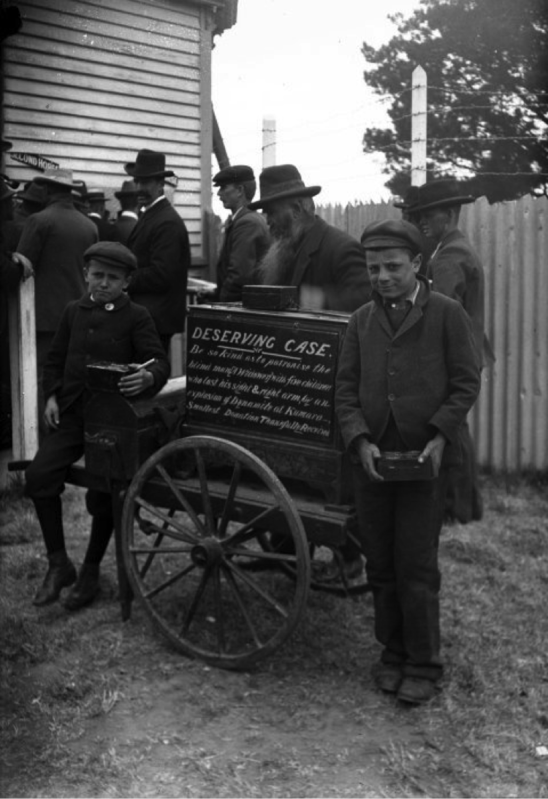Missionaries and traders began to settle in Aotearoa New Zealand from the early decades of the nineteenth century. In 1840, Te Tiriti o Waitangi (the Treaty of Waitangi) was signed between the British Crown and the indigenous Māori population.
Despite the Treaty’s principles, much later summarised as promising partnership, participation and protection, colonialism was largely negative for Māori, who are still disproportionately affected by disability.
Colonial New Zealand was settled by immigrants mainly from Britain and Europe who were prepared to endure a risky and lengthy sea trip for a chance of a better life in a new country.
Although infectious illness and accidents were common, disability was unwelcome as it challenged the idea of a new society, and could be a burden on others in a time when hard physical work was a daily necessity. So support was left to the benevolence of families or those providing charitable aid.
The Immigration Acts that discriminated against Chinese people in the late nineteenth century also sought to deter disabled people. The 1882 Imbecile Passengers Act external restricted “cripples, idiots, lunatics, infirm, blind, deaf and dumb”, and the 1899 Immigration Restriction Act external banned the “idiotic”, the “insane” and the contagious.

Jack (right) and Rudolph Lousich collecting donations for their father Louis Lousich. The sign reads: Deserving Case. Be so kind as to patronise the blind man a widower with five children who lost his sight and right arm by an explosion of dynamite at Kumara. Smallest donation thankfully received. Photograph taken ca 1897 in Kumara by Steffano Francis Webb. Alexander Turnbull Library Ref: 1/2-049635-G.
Mental illness was generally feared and misunderstood. The 1846 Lunatics Ordinance external provided incarceration of the mentally ill, initially in jails. The first public ‘lunatic’ asylum was opened in Karori in 1854, followed by Porirua in 1887.
The Porirua asylum mixed several categories of ‘undesirables’: those with mental health issues, intellectual impairment, disabled children, alcoholics, as well as elderly and homeless people.
Physically disabled people were often housed in the ‘chronics wards’ in ordinary hospitals established in the early twentieth century.
For decades, all these ‘inmates’ also provided large captive communities for doctors and specialists to practice theories and treatments.
As New Zealand society developed, children came to be regarded as more than little adults or economic units. The 1877 Education Act external provided free, secular, primary school education. The Act’s aim was an educated workforce while enabling state surveillance of children. Rules and inspections were rigid.
As the nineteenth century progressed, so did medical and social policy, and some groups such as those with vision and hearing impairments, were seen as ‘habitable’, meaning they had potential as worker citizens.
Hence, the establishment of residential schools such as the Sumner Institute for the Deaf and Dumb (later Van Asch) in 1880, and the Jubilee institute for the Blind in Auckland in 1890.
Although deaf children were forced to learn oral language and lip reading and were punished for signing for most of the next century, indigenous New Zealand sign language quietly developed.
These sites provided the opportunity for deaf and blind people to develop cultures in opposition to oral and sighted cultures, and thus for activism to emerge among these impairment groups.